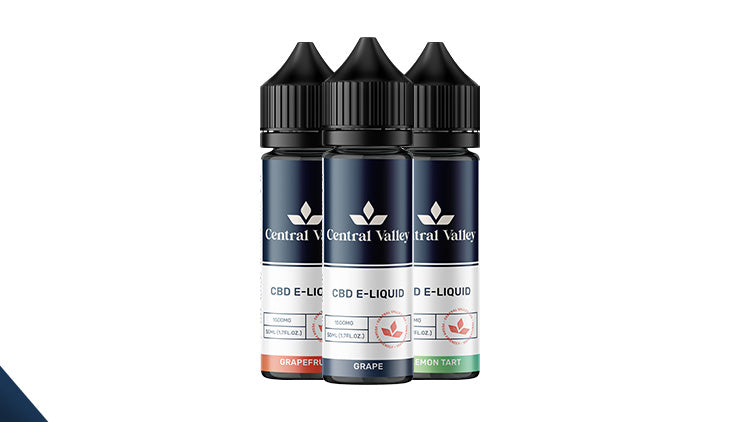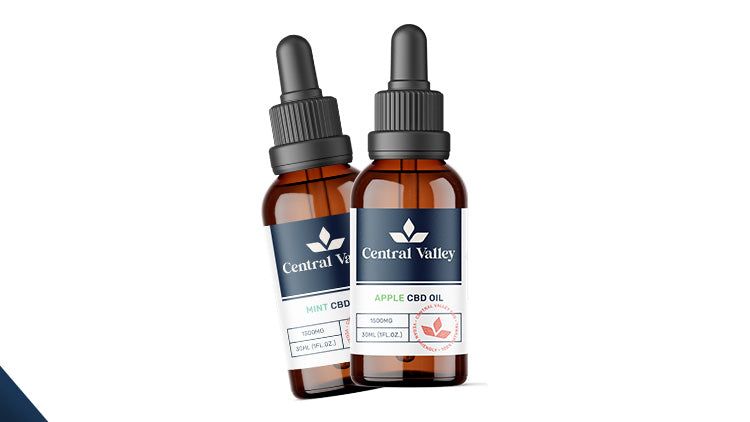
Understanding CBD Strength - Milligrams, Millilitres and Percentages
Share
Chapters
Introduction
Why CBD Strengths Can Be Confusing
Why CBD Strength Information Can Vary
The Different Ways CBD Strength Can Be Written
Understanding Oil Percentages
Choosing The Right CBD Strength
Conclusion: Navigating CBD Strengths
Introduction
Navigating the world of Cannabidiol (CBD) can be complex, especially when it comes to understanding CBD strengths. This guide aims to simplify this, helping you to make informed decisions about your CBD usage. Whether you’re a seasoned user or a newcomer, this helpful guide will help you understand the complexities of CBD strengths.
Shop CBD Oils, Shop CBD Gummies, Shop CBD Capsules, Shop CBD E-Liquids , Shop CBD Disposables, CBD Skincare
Why CBD Strengths Can Be Confusing

CBD strength is essentially a measure of the volume of CBD in a product. However, this volume can be expressed in different ways, which can lead to confusion.
For instance, a CBD oil labelled as 5000mg might seem high strength at first glance. But the actual strength depends on the volume of the oil. If this 5000mg is in a 500ml bottle, it equates to just 10mg of CBD per 1ml dropper. This means that the concentration of CBD is actually quite low.
It’s important to know how much CBD you’re getting per dosage, which can typically be calculated by dividing the total number of milligrams by the millilitres found in the bottle.
Why CBD Strength Information Can Vary
The way CBD strength is represented can vary significantly between manufacturers, and there are several reasons for this.
Product Differentiation
Manufacturers may choose a particular representation to differentiate their products from others in the market. For example, a company might choose to list CBD strength per edible to emphasise the precise dosage control their product offers.
Target Audience
The chosen representation can also be influenced by the target audience. For instance, a product aimed at beginners might use a simple mg per edible format, while a product for more experienced users might use mg per drop or per pipette for more precise dosing.
Regulatory Requirements
In some regions, regulatory requirements might dictate how CBD strength is displayed.
Marketing Strategies
Some manufacturers might use a particular representation as a marketing strategy. For example, using percentages might make a product seem more potent than it actually is.
Understanding these variations can help consumers make more informed decisions and choose the product that best suits their needs.
The Different Ways CBD Strength Can Be Written
CBD strength can be represented in a variety of ways, depending on the type of product and the manufacturer’s preference. This diversity in representation is one of the reasons why understanding CBD strength can be challenging for consumers.
Milligrams (mg) per edible
For CBD edibles like gummies or capsules, the strength is often listed as milligrams per piece. For example, a package might indicate that each gummy contains 10mg of CBD. This provides a clear dosage per edible, allowing consumers to easily control their intake.
Milligrams (mg) per drop or per pipette
For CBD oils or tinctures, the strength can be indicated as milligrams per drop or per pipette. This allows for precise dosing, especially important for products with high CBD concentrations.
Percentage (%)
CBD oils might also display their CBD content as a percentage. This percentage represents the concentration of CBD in the oil. For example, a 5% CBD oil contains 5mg of CBD for every 100mg of oil.
Understanding these different representations of CBD strength is crucial for consumers to ensure they are getting the desired dosage and to compare products effectively.
Understanding Oil Percentages

When it comes to CBD oils, the strength of the product is often represented as a percentage. This percentage indicates the concentration of CBD in the oil. But how is this percentage calculated?
The percentage of CBD in an oil is determined by dividing the amount of CBD (in milligrams) by the total volume of the oil (in millilitres), and then multiplying the result by 100. This gives you the concentration of CBD as a percentage of the total volume.
For example, if you have a 10ml bottle of CBD oil that contains 1000mg of CBD, the calculation would be as follows:
This means that the oil is 10% CBD, or in other words, each millilitre of oil contains 100mg of CBD.
However, it’s important to note that the percentage of CBD can vary significantly depending on both the total volume of the oil and the amount of CBD it contains. The table below provides a breakdown of CBD percentages based on various bottle sizes and CBD contents:

In bold you can see we have highlighted our own products. We choose 1000mg, 1500mg, 3000mg and 6000mg, all in 30ml bottles because we feel they give a great range of strengths for anybody looking to try CBD Oils.
Choosing the Right CBD Strength
When it comes to CBD dosing, it’s essential to proceed thoughtfully and methodically. Begin with a low-potency CBD oil, allowing your body to acclimate and minimise the risk of adverse effects. A medium-strength oil (around 1000mg to 1500mg per 30ml bottle) is a good starting point. Take a small dose (e.g., a few drops) and observe how your body responds. Pay attention to any changes in your symptoms, mood, or overall well-being. Gradually increase the dosage as needed for your wellness journey. A common starting dose falls within the range of 20mg to 40mg. We recommend beginning around the 25mg mark and incrementally increasing by 5mg until you find your optimal dosage. Remember to consult your physician before making any significant adjustments.
Here is a breakdown of our CBD Oils by drop so you can get that exact dose. There are approximately 20 drops per pipette.
1000mg = 1.65mg Per Drop
1500mg = 2.5mg Per Drop
3000mg = 5mg Per Drop
6000mg = 10mg Per Drop
Good luck finding your perfect dose, feel free to reach out on Instagram and let us know what your dose is.
Conclusion: Navigating CBD Strengths
As consumers, we encounter a diverse array of representations, from milligrams to percentages. So, how can we confidently navigate CBD strength?
Decode the Labels: For gummies and capsules, look for the mg per piece. A 10mg gummy provides a clear dosage. Precise dosing matters for oils and tinctures—consider milligrams per drop. And don’t forget the percentage: a 5% oil contains 5mg CBD per 100mg of oil.
Remember, strength isn’t just numbers; it’s about well-being. Whether you’re sipping a tincture or nibbling a gummy, embrace the journey—one drop, one percentage at a time.
Thank you for reading our blog, for 20% off entire site use "BLOG20" at checkout.







